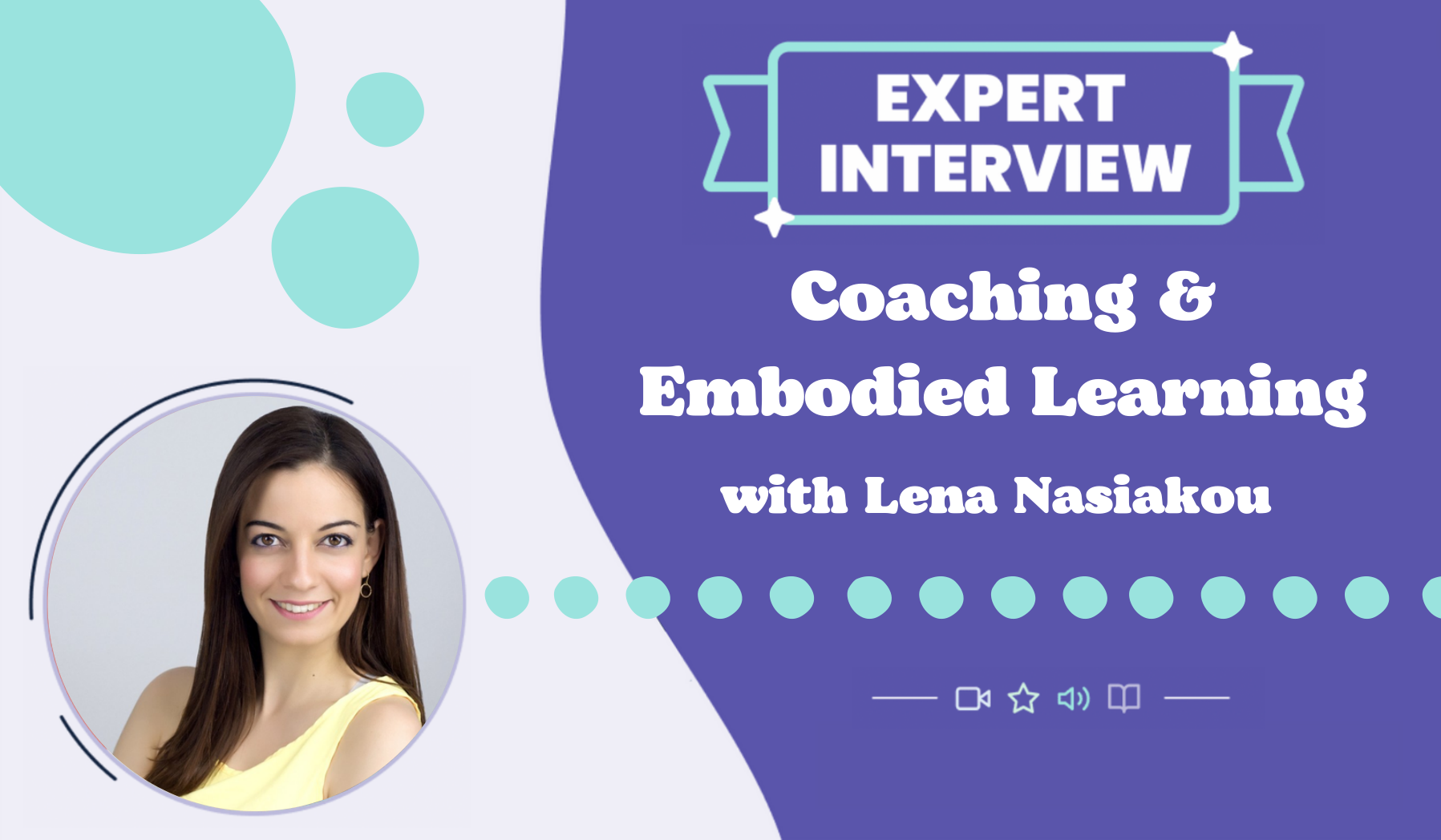Read
Listen
Interviews
Events
Paths
 Coaching & Embodied Learning with Lena Nasiakou
Coaching & Embodied Learning with Lena NasiakouLena's Moves co-founder Lena Nasiakou explains the huge benefits from coaching and mentoring, the one skill that every new leader needs to know, and teaches a framework to help anyone at work handle difficult conversations.
See Complete Playlist
Participants
2
Lena Nasiakou
Founder of Lena's Moves


Daniel Carter
CRO at Innential

Follow this interview using Innential Path

Coaching & Embodied Learning
Lena's Moves co-founder Lena Nasiakou explains the huge benefits from coaching and mentoring, the one skill that every new leader needs to know, and more.Enter PathHow to handle difficult conversations
Share
Key Takeaways
Q: What is a difficult conversation?
Difficult conversations are conversations that make you feel uncomfortable and trigger an emotional response. What’s difficult for you is difficult for someone else.
For example, when delivering bad news, like giving poor performance reviews or letting someone go.
Something that’s emotionally taxing.
Q: What are common resistances to encounter in difficult conversations?
There’s two kinds of resistance.
First, the resistance that leaders feel, and second, the people that are resisting, such as their direct reports.
Common resistance from direct reports is deflecting, or going into “fight, flight, freeze, or please”.
They defend themselves. They put up a wall.
New leaders go into pleasing. They try to please the other side because they’re afraid the person won’t like them anymore or they’ll leave the team. Something bad will happen.
This is the worst thing to do, because the new leader isn’t coherent. They say, “A”, they get resistance, then change their mind to “B” to please.
Leaders should be self reflective, observing themselves as to why they’re in the conversations.
A framework to help leaders do that comes from the psychology principle, “Transactional Analysis”.
It shows that people communicate different ego positions. For example, as a parent (critical or nurturing), a child (rebellious or submissive), or an adult (rational, cold thinking, logical).
The issue is, if the new leader talks to their direct reports from the critical parent ego state, “No you shouldn’t do this! That’s wrong!”, then the direct report will naturally go to the rebellious or submission child state. This creates resistance and further conflict.
When new leaders see that they’re doing that, they should try to change their ego state. Ideally to the adult state, talking with rationale and logic.
Learn more about this framework here
Q: Do you have a model or framework we can follow to make difficult conversations easier?
The switch box model.
Every conversation has four specific elements.
The earlier you can identify the “white nose” in these elements, the faster you can fix the conversation faster.
Content level - topic of discussion, what’s happening, etc.
White noise example: You thought this meeting would be about last week's project, and I thought it would be something else.
“I really thought we we’re going to talk about A, but all your questions are about B. What’s up? Can you clarify.”
Procedure level - length of the meeting, who is leading, for how many hours do we meet.
White noise example: You thought this meeting would last an hour, and I thought it would only be 45 minutes. This creates white noise.
“Before we move on to the next question, I had the impression we had the interview for 45 minutes, so I think we’re completely out of time.”
Interaction level - disturbed order of discussion, quality of interaction, not being present, not listening, check in emails.
White noise example: You’re checking your emails during our conversation, checking your phone. Or you’re constantly interrupting me.”
“Can we have some ground rules with how we interact with each other. Or how quickly we can respond to each other.
The most triggering is when the emotions come out.
Emotional level - emotional baggage outside of the discussion, emotions as a result of the discussion.
White noise example: One person is having a problem at home, it’s causing emotional pain, and it’s being let out during a meeting with a colleague.
Take a moment to pause and say: “I’m a bit emotionally charged right now, something happened at home, can we take a breath right now, can we take a moment together, can we slow down?
Acknowledge the moment. Deal with the reality.
If you have to let someone go for example, “I have something to tell you. This must feel really difficult.” Pause. Give them the space to talk. To express themselves.
Q: What's the best way to learn these models?
The best way to learn these skills is to practice it with role play. Hiring a trainer like Lena gets the more effective results. She works with groups of people to learn it.
Another way is to learn about and see it being used online.
Interview Shorts